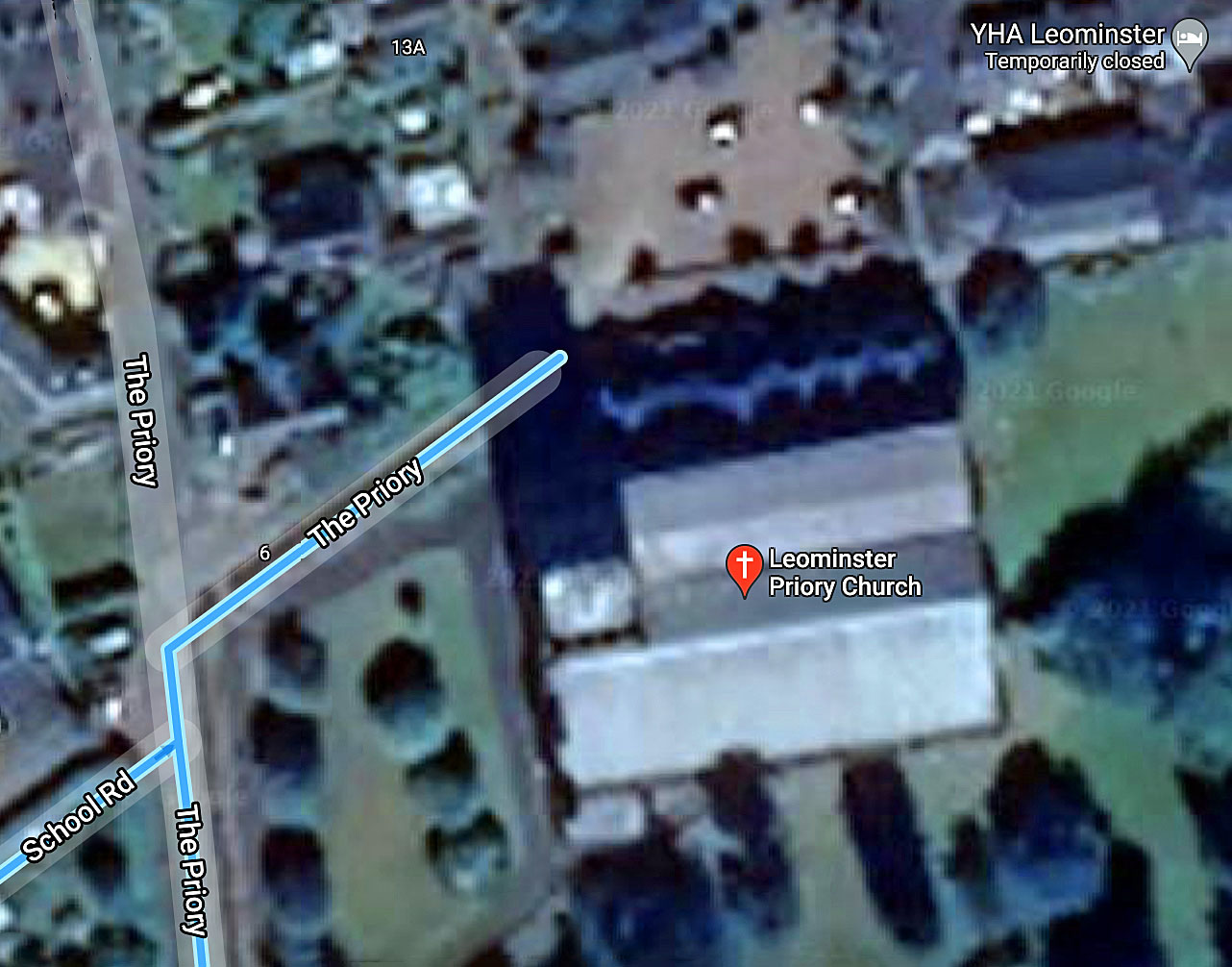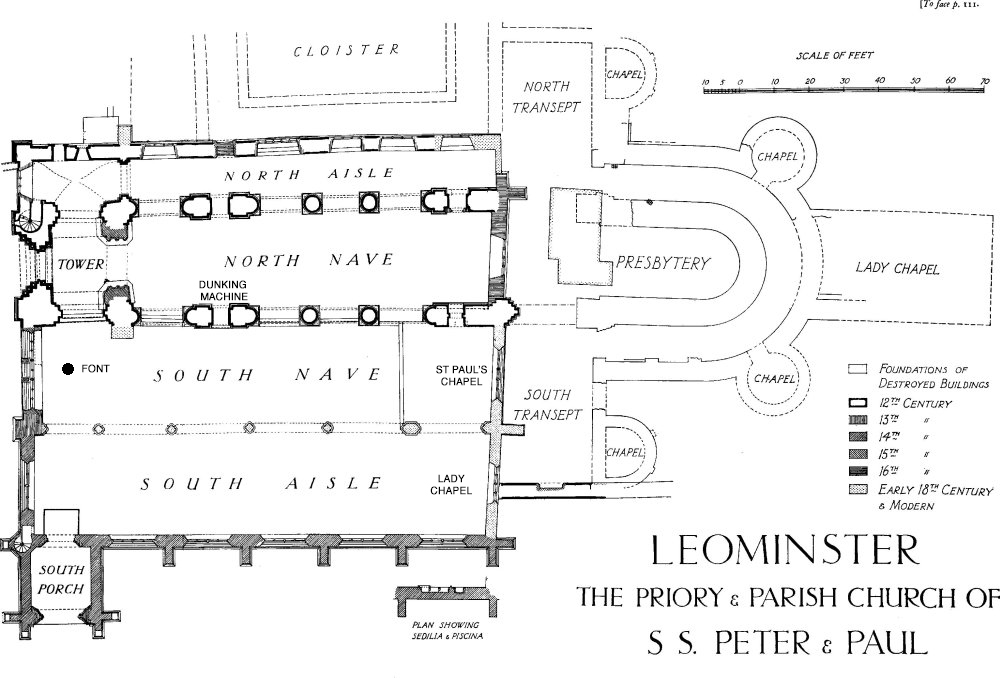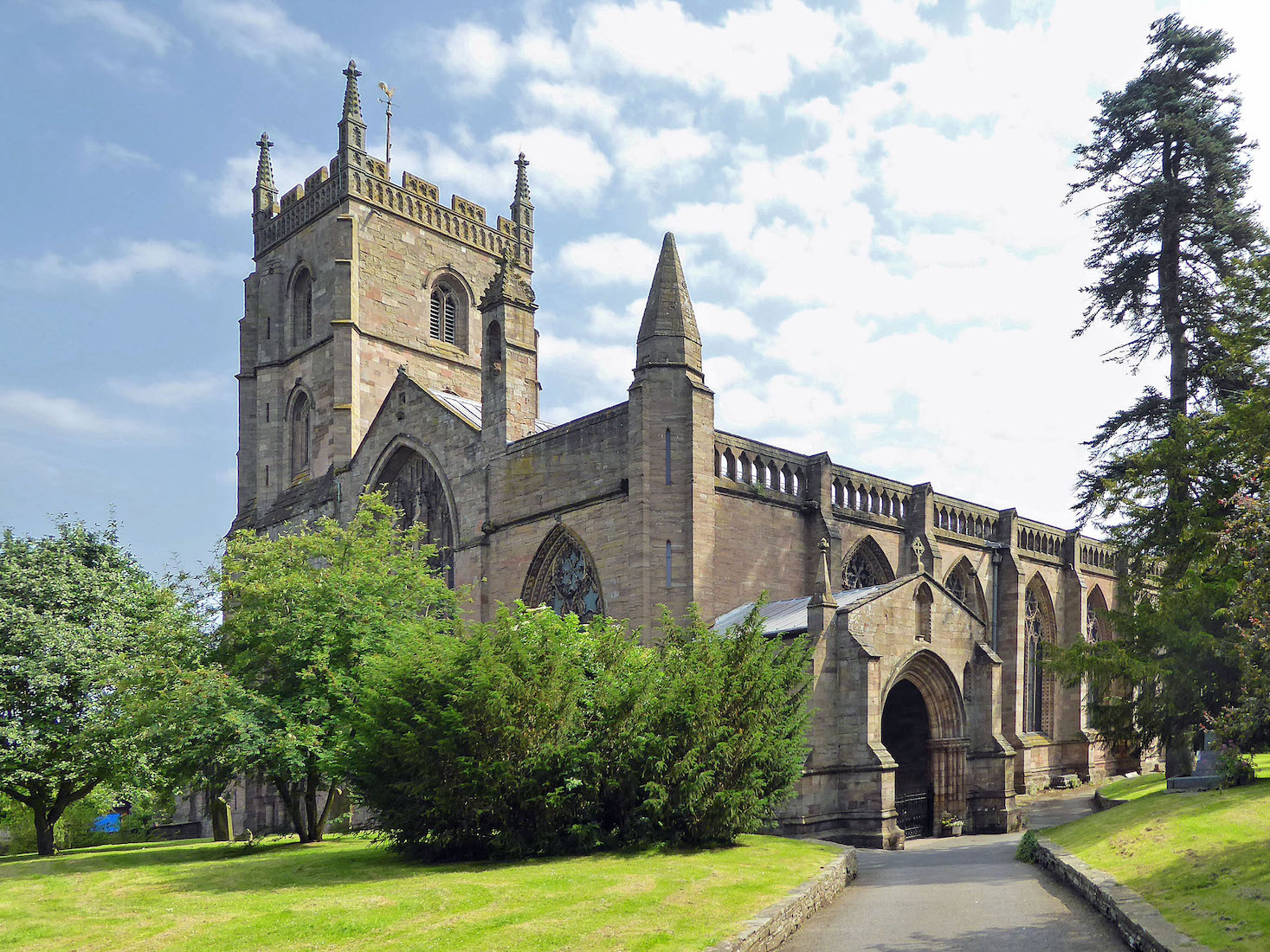CREDITS
As with other sites in this British Churches series, the main contributors of photos here are Aidan MacRae Thomson and Wendy Harris. [See main Introduction.] Their contributions are indicated by the initials AMT and WH respectively. For this Leominster Priory Church site, a smaller number of photographs from Rebecca Millman has been used to complete the site. I am so pleased that Rebecca has willingly allowed the use of her photographs: these are indicated by the initials RM. A link to Rebecca is
https:// www.linkedin.com/in/beckymill95/?originalSubdomain=uk
A brief history of this Church along with a satellite view and a plan is given below. However, if you wish to begin your tour of the Church immediately, tap / click on START . You can also access intermediate points in the tour by a tap / click on the following links:
NOTE ON MAGNIFYING IMAGES
With this website format the images are large enough for most purposes. If there is a need for greater magnification of an image, some helpful links are included in the Conclusion at the end of this site.

SATELLITE VIEW
Leominster is a pleasant if unremarkable town with many brick buildings in Herefordshire, England. Curiously, the name of the town is pronounced LEM' ster. The Priory Church is located several blocks to the northeast of the town: follow up Church Street which leads to The Priory (Street).
The axis of the Church is almost due east-west, with the sanctuary to the east. Hence we do not have to worry about distinguishing between liturgical and geographical directions. In spite of this, for consistency we will continue to use capital letters (for example East) as for the liturgical directions.
The Church has a lovely setting, being almost surrounded by grassy parkland.

PLAN
This Church plan shows how the existing Church was once part of an extensive priory complex.
The Church has a rather strange design which makes it very interesting to explore. The North nave is the original Norman Church, with the tower at the Western end. It is bounded by massive Norman columns and arches. North of this is the North aisle. There are memorials on the outer wall of this, but public access is restricted, and the area appears to be used for storage and perhaps a vestry.
South of the Norman Nave is a connected area comprising the South nave and the South aisle. This is a more brightly lit area, with large windows, particularly along the South wall. At the Eastern end, the South nave has the main altar, beyond which is the St Paul’s Chapel. Similarly, the South aisle runs into the Lady Chapel at the Eastern end – an area separated by a curtain.
There is a West entry door under the tower, but the main entrance today is through the South porch.
We shall explore this Church by beginning outside, near the South porch, and circling the Church in a clockwise direction. We shall then enter through the South porch, walking across the West end of the Church, past the font, to the tower. From here we shall move to the East end, and across to the South aisle, and the Lady Chapel.
HISTORY
Years Built: C13 and later
Address: The Priory, Leominster, Herefordshire
Simon Jenkins’ Rating: ****
55 Major British Churches: x
St Peter and St Pauls, more often known simply as Leominster Priory, is a 13th-century church in the heart of Leominster that was originally part of a medieval Benedictine priory. The priory is long gone, a victim of Henry VIII’s suppression of the monasteries, but the monastic church survives.
The church is especially notable for the superb 12th-century carving of the west doorway, which has exceptional carved capitals inside and out. This carving was executed by the ‘Herefordshire’ school of craftsmen, who were also responsible for the superb churches at Kilpeck and Shobdon, among others in the area. One of the interior capitals depicts a Green Man, the wild man of the woods figure linked to pagan fertility symbols.
The architecture is largely Early English, or Decorated Gothic. Within the priory are copies of monastic manuscripts dealing with the history of the priory and a 13th-century wallpainting depicting the Biblical ‘Wheel of Life’.
History
Around AD 660 St Edfrith converted King Merewald of Mercia to Christianity and a nunnery was established at what is now Leominster. Even that 7th-century church may not have been the first, for an old legend says that St David founded a church here a century earlier.
The nunnery was destroyed by Danish raiders in the 9th century and re-founded as a secular college, and then as a nunnery once more. The nunnery had ceased to exist by 1046 but in 1121 Henry I gave the ruined church and the estate of Leominster to his new abbey at Reading. Under the care of Reading Abbey, the church became a Benedictine priory and a cell of Reading.
With royal patronage behind the monks of Reading Abbey, they could afford to rebuild the priory on a grand scale.
In the 13th century, a second nave was added to the first, and in the 14th century, a south aisle was built on a scale to equal the naves. It is the combination of these three long, rectangular spaces that gives Leominster Priory such an unusual layout today, as if it had three naves.
The Priory was eventually suppressed by Henry VIII and most of the monastic buildings were torn down, but part of the priory church was saved to become the parish church. The town kept the church naves but the monastic chancel, side chapels, cloisters, presbytery and transepts were all pulled down.
The church was restored by Sir George Gilbert Scott in 1866 and again in 1878.
The Ducking Stool
Leominster Priory is home to the last ducking stool used in England. The ducking stool was a form of punishment often reserved for unscrupulous merchants and for wives whose husbands thought they were too opinionated, but it could also be used as a more deadly form of test for witchcraft.
https://www.britainexpress.com/attractions.htm?attraction=3872
A much more extensive description of the Priory Church is given in
https://www.british-history.ac.uk/rchme/heref/vol3/pp111-126



